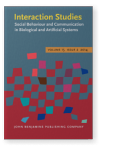Children with autism and composite tactile-visual toys during parent-child interaction
Based on sensory integration theory, six fabric samples containing tactile and visual stimuli were selected using the sensory perceptions of designers and combined with balls. Experiments involving these toys were implemented with 15 families with preschool-aged high-functioning autistic children. The results showed that (a) loose sequin (No. 15), which possessed equal tactile and visual intensities, was strongly correlated with frequent smiling/laughing and high enjoyment levels. The fabric provided a loose tactile sensation regarding surface interweave uniformity and a bright visual sensation regarding visually perceived luster; (b) suede (No. 5) exhibited a greater tactile intensity than visual intensity and was correlated with eye contact and activity response. This fabric possessed a smooth visual sensation regarding visually perceived smoothness; and (c) loose sequin (No. 15), which possessed equal tactile and visual intensities, was highly correlated with finger pointing and initiation. This fabric offered a thin tactile sensation regarding surface interweave thickness and a bright visual sensation regarding visually perceived luster. We suggest applying fabrics to composite toys. Specifically, loose sequin can be used initially to encourage autistic children to interact; subsequently, suede can enable sustained parent-child interaction. The experimental results provide a reference for establishing an innovative toy-design method for autistic children. Keywords: autism; sensory integration theory; parent-child interaction; toys
References
Ayres, A.J
(
1969)
Deficits in sensory integration in educationally handicapped children.
Journal of Learning Disabilities, 2(3), 44–52.


Block, J., Delgado, C., Hogan, A., Mundy, P., Seibertt, J., & Venezia, M
(
2003)
Early social communication scales (ESCS). University of Miami.

Bureau of Standards, Metrology & Inspection, R.O.C
(
2008) Retrieved from
[URL]
Chang, Y.P
(
1992)
Controversies on sensory integration therapy for children with learning disabilities.
Special Education Quarterly, 451, 33–38.

Chen, W.D
(
1994)
Guide for children with learning disabilities. Taipei: Yuan-Liou Publishing.

Hayashi, C
(
1950)
On the quantification of qualitative data from the mathematico-statistical point of view.
Annals of the Institute of Statistical Mathematics, 21.


Hung, S.H
(
1999)
A study on the relationship between texture image and the textile fabrics of bags. Master’s thesis, Institute of Applied Arts, National Chiao Tung University, Hsinchu.

Iwabuchi, C
(
2001)
Data management and analysis by yourself (pp. 180–185). Japan: Humura publishing.

Kanner, L
(
1943)
Autistic disturbance of affective contact.
Nervo Child, 21, 217–250.

Lo, J.L
(
1998)
Sensory integration and children development – Theory and application. Taipei: Psychological Publishing.

Lu, M.C
(
2002)
The influence of image on the sense of sight and touch: A case study of plastics material etching. Master’s thesis, Industrial Design Institute, National Cheng Kung University.

Ma, M.Y., & Su, H.F
(
2006)
The design study on toy for parent- autism children interaction. National Cheng Kung University. NSC- 96-2221-E-006-101.

Piaget, J
(
1932)
The construction of reality in the child.
Prizant, B.M., Wetherby, A.M., Rubin, E., Laurent, A, C., & Rydell, P.J
(
2006a)
The SCERTS Model: Volume I Assessment. Baltimore, MD: Brookes Publishing.

Prizant, B.M., Wetherby, A.M., Rubin, E., Laurent, A, C., & Rydell, P.J
(
2006b)
The SCERTS Model: Volume II Program planning and intervention. Baltimore, MD: Brookes Publishing.

Soong, W.C
(
2000)
Behavior and educational correction of autistic children. published by the foundation for autistic children and adults in Taiwan. Parent resource manual: preschool child education (revised edition). Taipei: Foundation for Autistic Children and Adults in Taiwan.

Sugiyama, K., & Novel, K
(
1996)
The basic for survey and analysis by excel (pp. 51–62). Japan: Kaibundo publishing.

Cited by
Cited by 2 other publications
Lee, Ya-Hsueh & Min-Yuan Ma
Liu, Zaixing, Lijun Jiang, Xiu Wang & Zhelin Li
2021.
A Study of Teaching Aids Design for Autistic Children with Focus on Hand-Eye Coordination. In
Design, User Experience, and Usability: Design for Diversity, Well-being, and Social Development [
Lecture Notes in Computer Science, 12780],
► pp. 270 ff.

This list is based on CrossRef data as of 4 july 2024. Please note that it may not be complete. Sources presented here have been supplied by the respective publishers.
Any errors therein should be reported to them.
